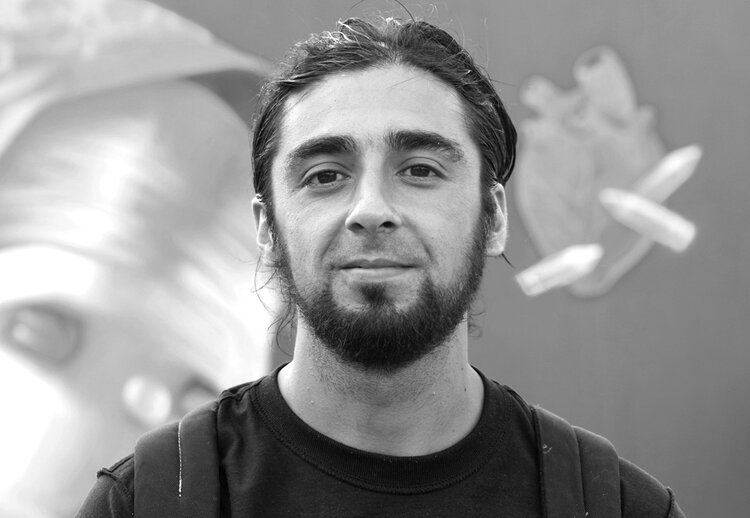Life is full of meaning and symbols. Life is full of art. And if we think of the sea as a big road that connects very distant persons, places and cultures, we can say that Copenhagen in Denmark and Valparaíso in Chile are two port cities that deepened the connection between themselves through mural art.
If you visit the streets of Nørrebro, a trendy multicultural neighborhood located in Copenhagen, you will find restaurants from different cultures, alternative shops, bars that are open until late at night, and trendy cafes. And if you happen to walk by St. John’s Church, located next to Sankt Hans Torv in the heart of the Nørrebro district, you can see a beautiful woman portrayed on a big white wall, with two braids and carrying in her arms a bread, a sneaker and a plant. She was brought to life by Inti Castro or INTI, a well-known Chilean mural artist who travels the world doing his art.
He called this mural ‘Union’ because it is next to a cultural center with the same name. ”A place that embraces multiple nationalities of displaced people, refugees and dreamers, migrants who carry with them the lights and shadows of their culture,” INTI says about his mural and the neighborhood through his Instagram account.
“We are focused on a global understanding of the world through music and art,” adds Esben Frost who works at Union Cultural Center and who also coordinated the idea, the sketch and the visit of INTI in the Union building.
Having worked at Union for 10 years, Esben has gone into this office and seen this big empty wall every day. “I have traveled extensively in Mexico, and loved their culture of big murals, so it was really sad to see this empty canvas year after year,” he recalls. “We had some ideas initially about asking Moroccan artists to decorate it with mosaics, but it didn’t really pan out. So we sort of gave up on the idea, but then I ran into these local artists, Caroline H. Thon and Jacoba Niepoort.” From one moment to the other, everything changed.
Caroline H. Thon and Jacoba Niepoort are two Danish visual artists that visited Santiago and Valparaíso in Chile in 2018. Their aim for this trip was to explore the visual culture that these two cities are famous for. Chile has a long tradition of muralism and urban art. During the decade of 1960, a group of painters called ‘La Brigada de Ramona Parra’ (BRP), made political paintings and murals in support of the Popular Union’s candidacy for the presidency of Salvador Allende. After the coup, this group and other artists were repressed. Somehow, the dictatorship had discovered how powerful street art could be as a way of communication. The members of the BRP used to say: “The walls are the magazines of the poor.” Immediately after Chile returned to democracy in the early 1990s, graffiti and street art culture exploded in the country. Especially in Valparaíso, the main city port, where every other street and house is painted in an artistic way.
“My first impression of Valparaíso was that it was very beautiful, raw, unpolished, bohemian, creative, chaotic, poor and welcoming,” remembers Caroline. As she and Jacoba started to fall in love with the city, they wanted to keep connected to this understanding of visual art culture. They quickly realized they could do something more, and started working on this exchange project together with the Chilean NGO ‘Valparaíso en colores‘ (VEC). The VEC’s approach to murals and public art is not only to paint a wall, but to involve communities in the process. This means that for every mural project, they get together with the community, engage in a dialogue, ask questions, and prepare workshops and reunions in order to collect feedback from the neighbors. From this approach to murals they collect locally inspired motifs, colors, meanings, and other ideas the community wants to express directly from the community itself. “Valparaíso en colores murals has uplifted many socially burdened areas in Valparaíso, and has been an important player in the creation of the distinctive artistic identity that the city is known for today,” explains Thon.
“So our wish was to create a project that supports art and cultural exchange between Chile and Denmark, and to paint murals that add long-term value to the areas in which they are produced. We wanted to bring Chile’s best muralists to Denmark and also create the murals with inspiration from VEC’s approach,” explains Caroline.
“With this project, we wanted to invite Chilean artists and their distinctive Latin American style to work in a Danish context, and make murals that create a stronger and more diverse and colorful visual identity in Nørrebro and in Nexø,“ Caroline explained. They named the project ‘From Port to Port’’ making reference to the two main port cities of Chile and Denmark: Valparaíso and Copenhagen. It is in this context, and because two artists traveled really far, that INTI arrived in Copenhagen in October of 2021 to paint his mural next to the Union building.
“I was so happy that he was coming. I knew he was a big artist, so I tried to learn everything about INTI and reinitiated the discussion with the neighbors. I shared with them some INTI works. And they were like: Yeah, this could be interesting. So we did different applications for funds so we finally could do the mural,” remember Esben.
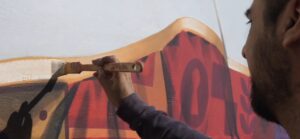 The whole process of painting the ‘UNION’ mural took almost ten days. “I talked with INTI about what kind of neighborhood Nørrebro was. It has a long tradition of resistance. For example: Many workers resisted against the European Union. Also during the Nazi occupation, this part of Copenhagen was full of barricades until the very end of the war. We also shared some ideas about what symbols could be difficult to portrait.”
The whole process of painting the ‘UNION’ mural took almost ten days. “I talked with INTI about what kind of neighborhood Nørrebro was. It has a long tradition of resistance. For example: Many workers resisted against the European Union. Also during the Nazi occupation, this part of Copenhagen was full of barricades until the very end of the war. We also shared some ideas about what symbols could be difficult to portrait.”
INTI took these ideas and beganto work, rain or shine. “He worked with a lot of freedom and discipline. During the beginning of the painting’s process, he was very focused. He spent a lot of time up in this lift, painting with his assistant. In the last days of painting, I felt how we were approaching the end and I could sense that INTI was slowly feeling more and more relaxed about his work. The last night he spent in Copenhagen, we went out into town together with his team and we shared drinks to celebrate,” tells Esben.
“The mural is just right next to my office. So it has been really nice to just watch people pass by and be amazed by the mural. Before, they would just pass and mind their own business. But now people stop and they take photos and talk. And that’s really nice,” he adds.
But INTI was not the only Chilean artist that visited Denmark invited by the ‘Port to Port’ project. In the summer of 2022, Nexø, a little town located on the east coast of the Baltic island of Bornholm in Denmark, also got a mural by Jocelyn Aracena, also known by her artistic name: Anis, one of Chile’s most recognized female muralists. She painted the façade of Isværket Nexø, an old ice factory now transformed into an exhibition hall and culture house.
Just like in Copenhagen, an information and orientation was held forthe neighbors in June, where the ‘Port to Port’ project informed the local people about the mural at the same time they collected their stories and input about the harbor, which was passed on as inspiration for Anis.
“In the design I wanted to reflect the old fishing activity of the port and this feeling of cold and uncertainty,” explains Anis about her mural. She carried out the project between 7th– 5th of July of 2022. Through the week she experienced many difficulties: “The most challenging part of painting a mural is always to feel comfortable at the height of the lift. I experience a lot of vertigo. When you paint a mural, you reach a very high altitude and somehow you are reminded that you are risking your life for something that you are very passionate about: art,” explains Anis.
“This sensation also generates internal processes and reaffirms the deep intention that I painted in the mural,” she states. With these two murals, Chile and Denmark found a new connection despite their differences and distance.
“There are many contrasts between the three cities of Valparaíso, Copenhagen and Nexø. One is hilly, the other two flat,” states Thon. “Nexø is small, while Valparaíso has over 500,000 inhabitants and was, before the Panama Canal, South America’s most important port city on the Pacific side. Copenhagen has moved from an industrial capital to a widely cultural capital. Copenhagen is now rich, while Nexø and Valparaíso are still in the process of finding new ways to transfer from the dead industries of fishing and shipping towards service and culture,” she says.
“However, they have this in common: They are all port cities with a special port spirit. They also have in common that they have experienced a heyday centered on the port industry, which has stagnated and left them to find other ways to flourish. The cities have a very different tradition of mural paintings. Valparaíso has become world-renowned for its over-painted houses and buildings and thriving artist community. In Nexø there is a great tradition of painting house facades in strong colors, but mural art as such is not a large part of the town. Nexø still seems to be in the process of transitioning to also being a cultural port and shows great potential,” she explains.
With the mural by Anís, the ‘Port to Port’ project wanted to get an outside artist to interpret Nexø’s special spirit, colors, and history, with its distinctive Latin American color palette and magical universe. “We wanted to integrate the melancholy of the town related to the death of the fishery, but connected it to a hope and a gaze into the potentials of the future. We hope to create a mural that will both be a landmark and a welcome when arriving from sea, but also a cultural marker that pays tribute to the port’s new additional function as a cultural and recreational port,” the people behind ‘Port to Port’ state.
The Art and the Community
Esben Frost points out the importance of having the approval of the community to bring artists to paint the walls, a space that belongs to the community: “A few years back, we had an incident here in Nørrebro where a really big graffiti artist, Shepard Fairey (Obey), made a mural painting right where the Youth House used to be. The municipality had sold it off and then the youngsters were evicted and their house was torn down. There were many feelings involved with that location, and the day after the mural was finished, it was paint-bombed by local kids. So I was nervous if the same thing would happen here with our mural, but so far everyone seems to like it. I think we’ve had only one negative opinion among hundreds and hundreds of positive comments.”
“INTI has done an amazing job, and it’s nice to have something artistic on the wall for both locals and guests. It has become a symbol of the house now, even though it has only been there for less than a year.”
The same happened with Anis´s mural ‘La Espera’ or ‘The waiting’: “The mural by Anis was welcomed beyond our wildest hopes,” says Caroline H. Thon. Artists, hosts, and the community inaugurated the mural with a grand afternoon party where all Nexø was welcomed and about 100 people participated. “Even the more conservative older fishermen were very appreciative and commented nostalgically on the colors and motif. For some it seemed to change the thoughts and fears towards the port by becoming more of a cultural port. And many, who mentioned that they were generally not interested in art, said that they found it very beautiful and nice with some new life. So we are very happy with the result and how people have received it,” remembers Caroline.
“Artists are catalysts of the processes; their work captures and generates collective experiences, their works are means to unite people, contributing to the work that studios, like ours, seek: To generate improvements in urban perception, work for positive changes and, above all, everything, projecting an objective, responsible, and consistent view of the city,” explains Esteban Barrera, Director of Lira Arte Público, a Creative Studio based in Santiago inChile that looks after, promotes, and disseminates national and Latin American urban art. And somehow, the cultural tradition of Chile of using the walls as a way to communicate with locals has been disseminated.
“I think murals are important as a means of communication, because they are on public roads and depending on their size they can have a great impact on people. Big murals not only make people ask questions about what the work itself is trying to express, but also they can wonder: How was it made? How many days does it take to paint it? How is a drawing dimensioned in those proportions? Who authorizes painting?” adds Anis.
“I think that these questions from the public are interesting and create a new engagement in people who sometimes also find themselves attracted by the idea to paint, draw or make art after being inspired by other artists”.
Marta Apablaza Riquelme is a freelance science journalist based in Santiago, Chile
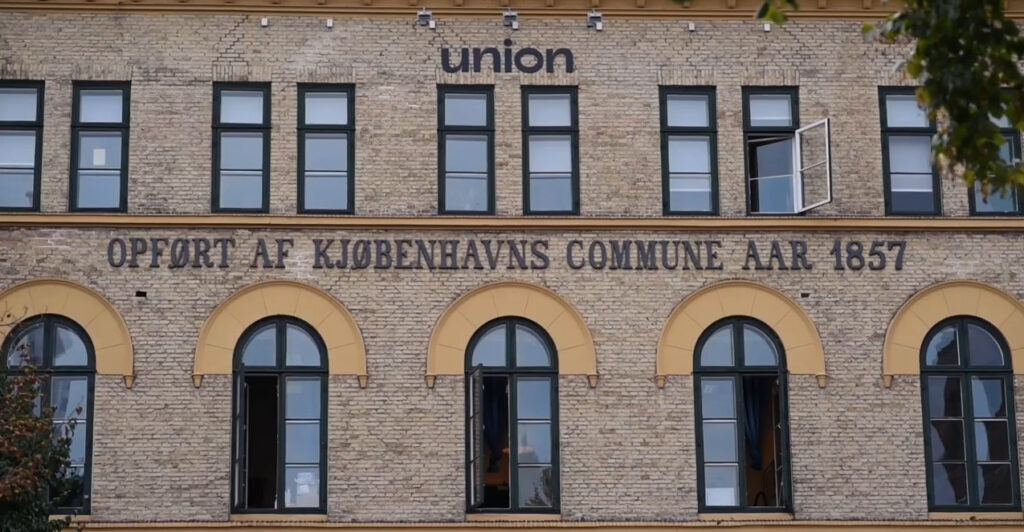
Since 1993, UNION has been a focal point for inter-cultural activities in Denmark. More than twenty different organisations are members of UNION and work in the house, originally built in 1857 as a school. Today, UNION is a cultural center of the Copenhagen Municipality with more than 400 events every year, i.e., seminars, screenings, theatre, festivals, exhibitions and concerts. |
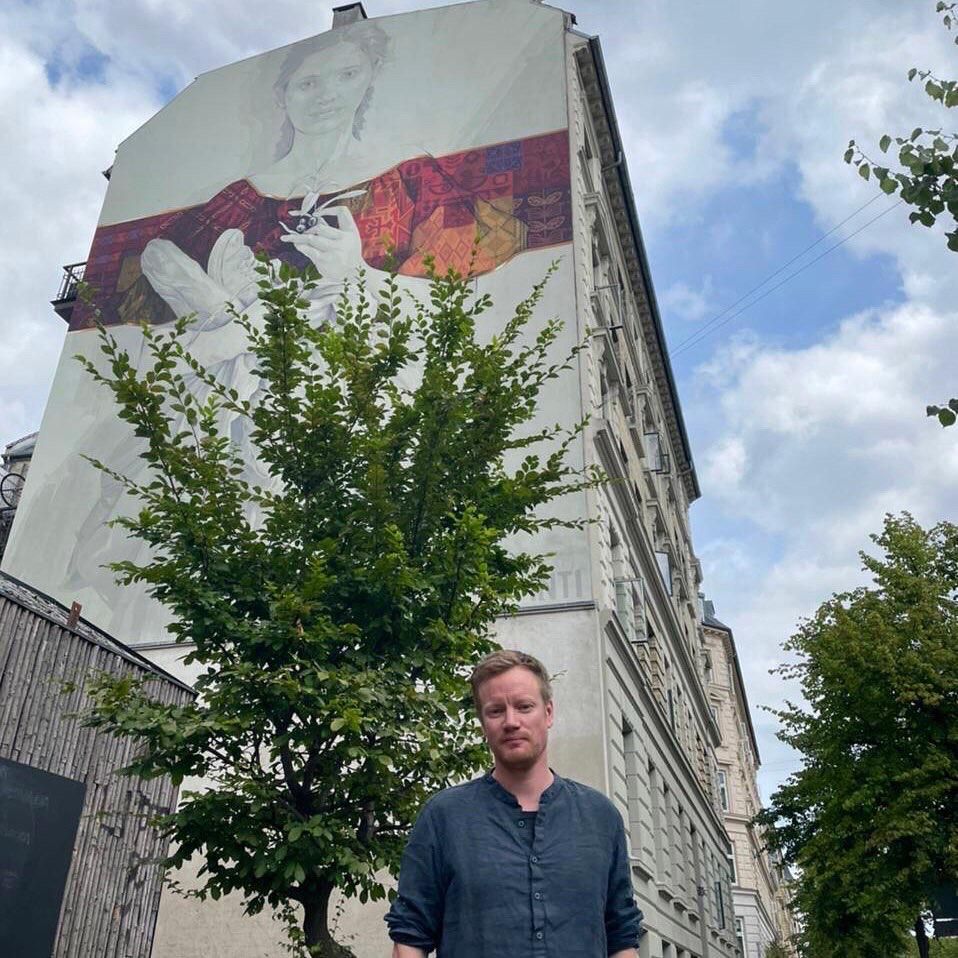
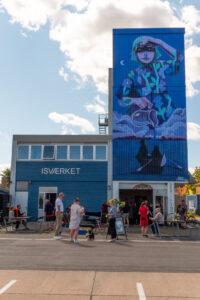
| Inti Castro is a muralist devoted to street art, specifically to graffiti, since age 15, he initially plied his trade spraying tags and letters, today he continues to use spray cans. He was born in the port city of Valparaíso, Chile. His name, translated into Incan means ‘Sun’. WHilst painting on the streets he studied at the Fine Arts School of Viña del Mar. Today he is one of the most recognized street artists globally. He usually paints murals on a gigantic scale, his works often take up whole sides of buildings. He has painted murals in several cities in Chile and worldwide and has participated in international festivals dedicated to the culture of street and graffiti in Norway, France, Poland, Hawaii and Lebanon amongst others. He was also one of the organizers of the Graffiti festival in Valparaiso that pays tribute to the city characterized as a cultural melting pot. Inti ́s work is mainly inspired by pre-Columbian and Andean cultures, rescuing and redefining iconography and symbols that are both ancient and contemporary. His characters look very often like puppets, dolls, and usually represent the human figure as well as animals. Despite criticism from detractors of artistic expression in public spaces, he was granted murals on walls and buildings initially in Valparaiso followed by cities all over the world. He is also part of a crew named ’Stgo Under’ who he still occasionally paints with. |




